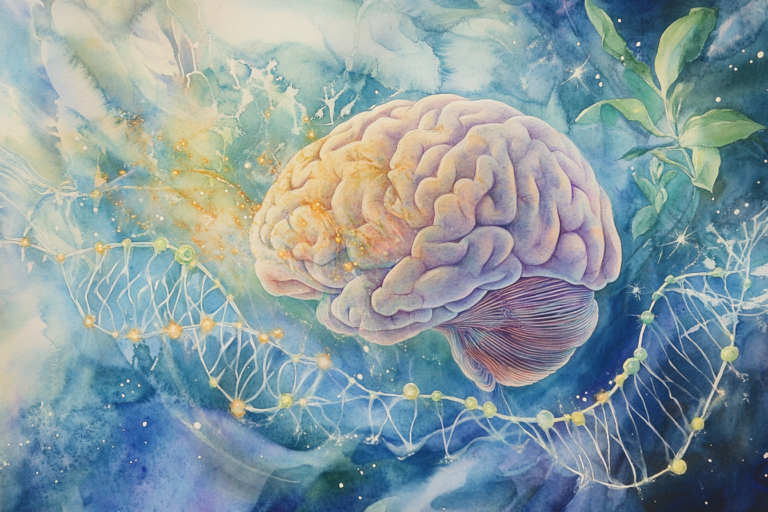
The human brain has long been seen as a mystery—a complex, unfathomable organ capable of not only processing vast amounts of information but also dictating our emotions, actions, and even our physical health. While traditional science has focused on the brain’s cognitive capabilities, a new wave of research is revealing the brain’s latent ability to regenerate tissue and initiate healing processes throughout the body. This emerging field, blending neuroscience with quantum biology and regenerative medicine, is moving us closer to what once seemed like magic: the ability to heal and rejuvenate from within.
In this article, we will dive deep into how the brain can act as an engine of regeneration, leveraging cutting-edge research and even integrating practices like microdosing and mental programming to unlock the body’s inherent healing powers.
While it’s long been believed that neurons, the brain’s primary cells, don’t regenerate after being damaged, recent research has shown that this is not entirely true. The discovery of neurogenesis—the process by which new neurons are formed in the brain—has challenged the notion that neuronal death is irreversible. Neurogenesis primarily occurs in the hippocampus, a brain region critical for memory and learning, but other regions may also show regenerative capabilities under certain conditions.
These discoveries open up new possibilities for understanding the brain’s role in regenerating tissues beyond the central nervous system. The idea that the brain could send signals to tissues and organs throughout the body to regenerate is no longer science fiction—it’s becoming a scientific reality.
One of the most promising developments in the field of regenerative medicine is the discovery that the brain can send specific electromagnetic or bioelectric signals that influence cellular regeneration. These neural impulses, governed by the brain’s electrical activity, act as messengers, potentially activating dormant genetic programs responsible for tissue repair.
Research has shown that neural activity, particularly in the form of teta and gamma brainwave frequencies, can stimulate cellular recovery. For instance:
When we harness these brainwave frequencies, either through mental practices like meditation or via external stimulation, we open the door to activating regenerative processes within our body. A fascinating example of this is seen in transcranial magnetic stimulation (TMS), which can modulate brain activity to influence everything from mood to physical healing .
At the intersection of neuroscience and quantum biology lies an exciting field that could explain much of the brain’s mysterious healing powers. Quantum biology examines how quantum phenomena, such as superposition, entanglement, and coherence, influence biological systems. The brain, with its complex electromagnetic and biochemical activity, may very well operate at a quantum level when it comes to regeneration.
Several studies suggest that biophotons—light particles produced by biological organisms—might play a role in cellular communication and regeneration. The idea is that the brain, acting as a conductor of quantum processes, can emit and control biophotonic energy, which in turn influences cellular health and repair. Researchers like Fritz-Albert Popp have theorized that biophotons help regulate biological functions at a cellular level, guiding processes such as DNA repair .
This perspective opens the possibility that mental intention, coupled with the brain’s natural quantum dynamics, can guide healing processes. What we think, visualize, and even dream about may, in fact, shape how our body regenerates.
We’ve all heard about the placebo effect—how belief in a treatment can actually trigger physiological changes in the body. But what if we could harness the power of our thoughts more deliberately? The concept of mental programming posits that by focusing our thoughts and emotions, we can create the ideal conditions for cellular regeneration.
By practicing daily visualization combined with meditation or microdosing (low, controlled doses of psychoactive substances to enhance neuroplasticity), individuals can cultivate an internal environment that encourages regeneration.
In recent years, microdosing psychoactive substances has gained popularity, not only for improving mood and creativity but also for enhancing brain plasticity. These substances, in sub-perceptual doses, can subtly alter brainwave activity, particularly increasing teta and gamma waves. These altered states allow the brain to access deeper regenerative potentials while maintaining cognitive function.
Microdosing has been shown to improve:
When combined with mental programming techniques, microdosing can create a synergistic effect—enhancing both cognitive performance and regenerative capabilities. The use of microdosing, especially in combination with brainwave entrainment or meditation, creates a fertile ground for cellular renewal and repair .
The convergence of neuroscience, quantum biology, and regenerative medicine is revealing that the brain is far more than a cognitive organ. It has the potential to act as a healing engine, triggering regeneration not just in neurons but throughout the body. From understanding the brain’s bioelectrical signaling to exploring quantum processes that may guide cellular repair, we are at the forefront of discovering how mental intention, brainwave modulation, and microdosing can unlock the body’s regenerative powers.
What once seemed magical—healing with the mind—is now grounded in scientific exploration, and by unlocking these hidden potentials, we bring ourselves closer to the secrets of youth and longevity.